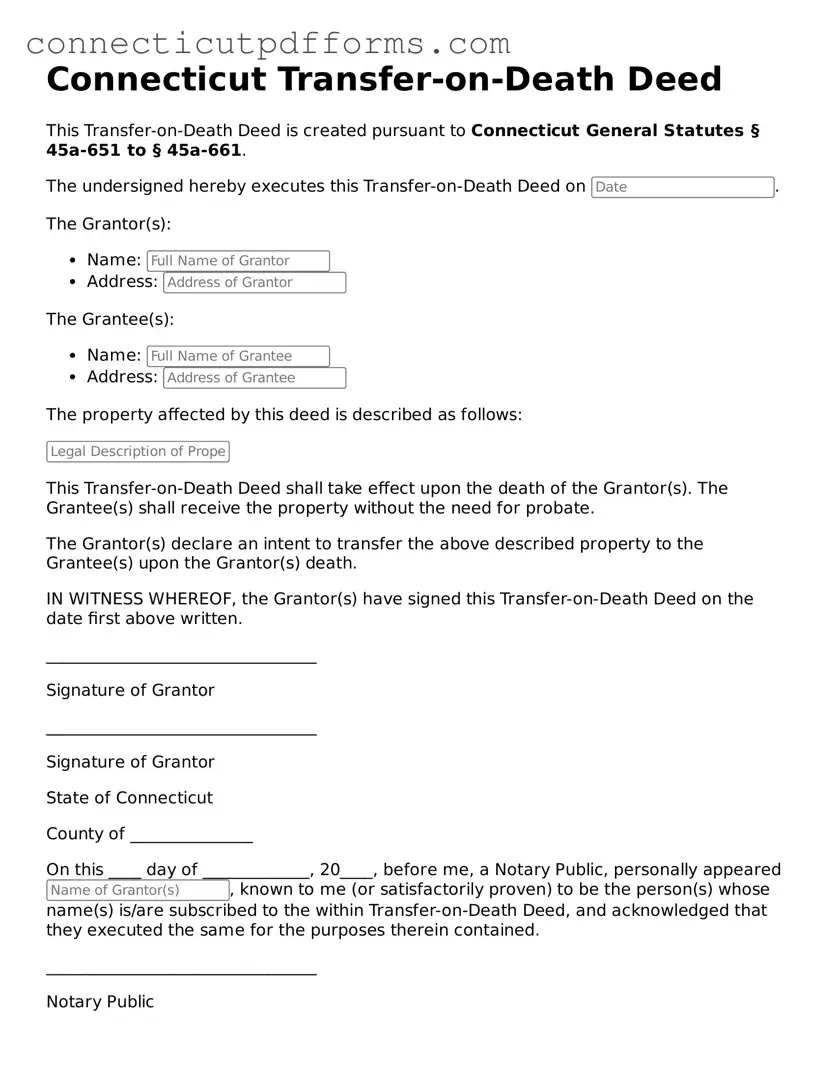Fillable Transfer-on-Death Deed Form for Connecticut
The Connecticut Transfer-on-Death Deed is a legal document that allows property owners to transfer their real estate to a designated beneficiary upon their death, without the need for probate. This form provides a straightforward way to ensure that your property passes directly to your chosen heir, simplifying the transfer process and reducing potential complications. For those interested in securing their property for future generations, filling out this form is a crucial step; click the button below to get started.
Launch Editor Now
